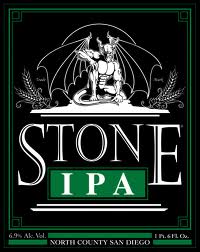
A small slice of the huge CBC crowd. (Photo by Jason E. Kaplan and Courtesy of Brewers' Association)
So I thought I should offer a few more observations from my trip to San Fran for the American Craft Brewers Conference. You might think I spent most of my time drinking beer, but you would be wrong. I spent hours in sessions and workshops, learning a ton about the beer industry. There were literally dozens of sessions to choose from – usually 5 or 6 going on simultaneously. I picked my spots carefully, picking things that weren’t too technical or dealing too much with the “business” end of the industry.
I want to relay two workshops that I found remarkably useful. There are others, but these two stick in my brain. After I may add to my list of beer highlights.
The first was a session on how to start up a brewpub. I am not thinking of doing that, but I thought it might be interesting. And it was. It was the owner of Boylan Bridge brewpub in Raleigh, North Carolina talking about his trials to open up. I took two things away from his talk. First, have lots of patience, as it will take longer than you think to open. Second, find a community connection. His brewpub is successful because it found a way to connect with the local neighbourhood. He had many things going against him – a low traffic location, no parking, a so-so building. But he had a great view of downtown, a commitment to good beer, and a vision of how it could work. And it has. The operation isn’t large but it shows that a local, community-focused operation can succeed in any city. And not a single TV in the place. Something for budding entrepreneurs on the prairies to think about.
The second session was about how to turn a nanobrewery into a microbrewery. A nanobrewery is a tiny commercial brewery, making 40-200 litres at a time. It is fairly alien to Canada at the moment, although Plan B Brewing in Smithers, B.C. would classify. Nanobreweries are illegal in Alberta, as we have a minimum production capacity that renders them impossible. We heard from the owner/operator of Schooner Exact out of Seattle. In his first year, he produced 6500 litres. I did the math and figured out that if I brewed three times a week on my home system, I could make that much. It is not a recipe for making money, he pointed out. However, four years later, in 2011, he projects making 200,000 litres, quite the jump. The key for him was keeping initial capital costs low, build a brand name and use that to leverage some additional investors. He expanded quite quickly and without going substantially into debt.
The nanobrewing concept makes sense as a project in local community. However, you can’t make much money from it. Shifting to a small micro that serves only the surrounding community does not detract from the focus on local, but allows the principals to make a living. It is a fascinating model.
Now, on to some more of my beer highlights:
 Full Sail Amber Ale: One of those classic session beer. Caramel, toffee and toast is balanced with some light hop bitterness. Lighter and sharper than Yukon Red (a fantastic version of an amber ale), and still very drinkable. It was one of those rare times on the trip when I asked for a second sample.
Full Sail Amber Ale: One of those classic session beer. Caramel, toffee and toast is balanced with some light hop bitterness. Lighter and sharper than Yukon Red (a fantastic version of an amber ale), and still very drinkable. It was one of those rare times on the trip when I asked for a second sample.
Bell’s Winter White: A Witbier that surprises. At first it is a bit floral and thin, but finishes with a lovely citrus kick. Probably not as lovely as Blanche de Chambly but it remains an impressive witbier.
 Widmer Brothers Hefe: I only had a sip of this beer (thanks, Lavonne!), but I quickly i.d.ed it as a classic version. Sweet and fruity with a nice balance between clove and banana. It had a softness to it that I appreciated a lot.
Widmer Brothers Hefe: I only had a sip of this beer (thanks, Lavonne!), but I quickly i.d.ed it as a classic version. Sweet and fruity with a nice balance between clove and banana. It had a softness to it that I appreciated a lot.
Stone IPA: This beer really understands balance. I have had Arrogant Bastard, and even Double Arrogant Bastard, and they slap you in the face with hops. I was expecting a similar experience with the IPA, but I was wrong. This has an assertive piney hop bitterness, but balanced with a toasted crystal malt base. The hops lingered, but not in a puckering way. I really appreciated the restraint in this beer.
So there you go, another handful of American beer highlights. If the comments on the first post are any indication, many of you have already tried these beer. But if you haven’t mark them on your “must have” list and browbeat your friends into picking some up for you on their next trip south.

April 8, 2011 at 5:42 PM
That’s the thing about Arrogant Bastard and Double Bastard. They intentionally slap you in the face, hence their names, and the fun-condescension-to-non-beer-geeks/snobs/advocates read on the packaging. But I agree with your previous post…Pliny The Elder really does it right. That one and Dogfish Head 90-minute are side-by-side at the top of my list for the best beer in the Double IPA class, mainly because they are bitter and very hoppy, yet balanced and dangerously drinkable at the same time.
April 9, 2011 at 4:55 PM
Ernie,
Not to make this a mutual-admiration society, but I think you are dead right about balance in Double IPAs. Pliny the Elder has a lovely drinkability that Arrogant Bastard does not. I really appreciated AB, but I am more likely to go to Pliny on a more regular basis – if either were available on the prairies.
April 10, 2011 at 9:47 AM
I find all the dark crystal in Arrogant Bastard makes it very balanced and highly drinkable.
I would put beers like Pliny and Hop Stoopid in the same category – tons of fruity hops that keep the bitterness balanced. Whereas a beer like 90min IPA is more about the toasty malt bass providing a balance.
I don’t really care for Stone IPA, but then I don’t like most “session” IPAs (Bells Two Hearted, DFH 60), they just don’t do it for me. Yet I love Wild Rose IPA and Half Pints Little Scrapper, which offer a little more malt complexity.
Stone Ruination IPA is awesome though with it’s massive piney bitterness.
Just my opinion. Cheers!
April 12, 2011 at 9:58 PM
Mark,
You have a palate that all beer geeks must respect. I know you know your beer. This latest comment suggests to me that you are more of a hophead than I am. Which is cool. I go back and forth on the big hoppy beer. Right now I am in a “balance” phase, but other times I appreciate 90 Minutes’ crazy hops and Arrogant Bastard’s unapologetic character. However, I stand by the fact that – for the moment – Pliny the Elder really stands out for me. That may change in a few weeks. But for now that is what works for me.
Thank you for your love of beer and your unfailing good taste. We need more of you.
Jason